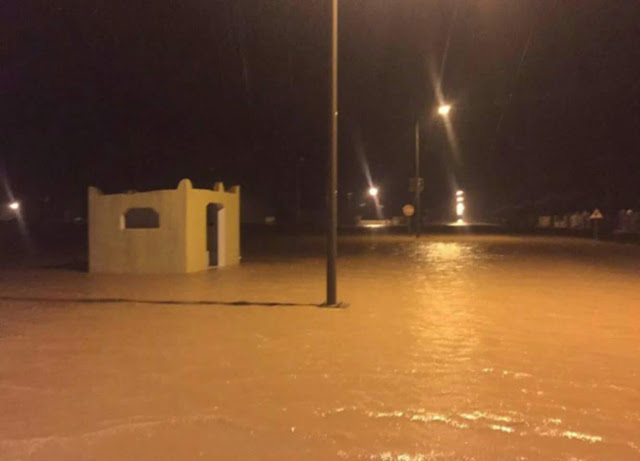(in mm & min 4000 mm)
1. Talacauvery, Karanataka - 5580
2. Agumbe, Karnataka - 5086
3. Yadur, Karnataka - 4975
4. Hulikal, Karnataka - 4777
5. Shirgaon Ghat, Maharashtra - 4690
6. Masitkatte, Karnataka - 4654
7. Tamhini Ghat, Maharashtra - 4620
8. Kuttiyadi, Kerala - 4613
9. Gavali, Karnataka - 4539
10. Lamaj, Maharashtra - 4534
11. Patherpunj, Maharashtra - 4474
12. Kitwade, Maharashtra - 4282
13. Varahi, Karnataka - 4264
14. Dabbaedka, Karnataka - 4225
15. Dawadi Ghat, Maharashtra - 4210
16. Kollur, Karnataka - 4210
17. Amboli, Maharashtra - 4122
18. Anasi, Karnataka - 4098
19. Bhagamandala - 4038
Cherrapunji is lagging way behind with a rainfall of 3681 mm.
Metropolitan Cities minimum 3 million population - Rainfall from 01.06.2018 to 31.07.2018
------------------
in mm
1.Mumbai - 1931
2.Surat - 1038
3.Kolkata - 718
4.Delhi - 326
5.Pune - 303
6.Jaipur - 248
7.Hyderabad - 193
8.Chennai* - 180
9.Bangalore - 176
10.Ahmedabad - 152
* Chennai monsoon starts from October
Tamil Nadu Major Cities Rainfall from 01.06.2018 to 31.07.2018
------------------
in mm
1.Salem - 369
2.Chennai - 180
3.Trichy - 116
4.Coimbatore - 77
5.Madurai - 68
Karnataka Top 5 Rainfall places from 01.06.2018 to 31.07.2018
------------------
1. Talacauvery - 5580
2. Agumbe - 5086
3. Yadur - 4975
4. Hulikal - 4777
5. Mastikatte - 4654
Maharashtra Top 5 Rainfall places from 01.06.2018 to 31.07.2018
------------------
1. Shirgaon Ghat - 4690
2. Tamhini Ghat - 4620
3. Lamaj - 4534
4. Patherpunj - 4474
5. Kitwade - 4282
Kerala Top 5 Rainfall places from 01.06.2018 to 31.07.2018
------------------
1. Kuttiyadi - 4613
2. Pambla Dam - 3745
3. Thariode - 3312
4. Kakki - 3058
5. Ponmudi - 2909
Tamil Nadu Top 5 Rainfall places from 01.06.2018 to 31.07.2018
------------------
1. Chinna Kallar, Coimbatore - 2946
2. Peria Kallar, Coimbatore - 2719
3. Sholayar Dam, Coimbatore - 2673
4. Avalanche, Nilgiris - 2520
5. Upper Bhavani, Nilgiris - 2448
Goa Top 5 Rainfall places from 01.06.2018 to 31.07.2018
------------------
1. Valpoi - 2494
2. Pernem - 2112
3. Ponda - 2066
4. Sanguem - 2039
5. Ela - 2002
1. Talacauvery, Karanataka - 5580
2. Agumbe, Karnataka - 5086
3. Yadur, Karnataka - 4975
4. Hulikal, Karnataka - 4777
5. Shirgaon Ghat, Maharashtra - 4690
6. Masitkatte, Karnataka - 4654
7. Tamhini Ghat, Maharashtra - 4620
8. Kuttiyadi, Kerala - 4613
9. Gavali, Karnataka - 4539
10. Lamaj, Maharashtra - 4534
11. Patherpunj, Maharashtra - 4474
12. Kitwade, Maharashtra - 4282
13. Varahi, Karnataka - 4264
14. Dabbaedka, Karnataka - 4225
15. Dawadi Ghat, Maharashtra - 4210
16. Kollur, Karnataka - 4210
17. Amboli, Maharashtra - 4122
18. Anasi, Karnataka - 4098
19. Bhagamandala - 4038
Cherrapunji is lagging way behind with a rainfall of 3681 mm.
Metropolitan Cities minimum 3 million population - Rainfall from 01.06.2018 to 31.07.2018
------------------
in mm
1.Mumbai - 1931
2.Surat - 1038
3.Kolkata - 718
4.Delhi - 326
5.Pune - 303
6.Jaipur - 248
7.Hyderabad - 193
8.Chennai* - 180
9.Bangalore - 176
10.Ahmedabad - 152
* Chennai monsoon starts from October
Tamil Nadu Major Cities Rainfall from 01.06.2018 to 31.07.2018
------------------
in mm
1.Salem - 369
2.Chennai - 180
3.Trichy - 116
4.Coimbatore - 77
5.Madurai - 68
Karnataka Top 5 Rainfall places from 01.06.2018 to 31.07.2018
------------------
1. Talacauvery - 5580
2. Agumbe - 5086
3. Yadur - 4975
4. Hulikal - 4777
5. Mastikatte - 4654
Maharashtra Top 5 Rainfall places from 01.06.2018 to 31.07.2018
------------------
1. Shirgaon Ghat - 4690
2. Tamhini Ghat - 4620
3. Lamaj - 4534
4. Patherpunj - 4474
5. Kitwade - 4282
Kerala Top 5 Rainfall places from 01.06.2018 to 31.07.2018
------------------
1. Kuttiyadi - 4613
2. Pambla Dam - 3745
3. Thariode - 3312
4. Kakki - 3058
5. Ponmudi - 2909
Tamil Nadu Top 5 Rainfall places from 01.06.2018 to 31.07.2018
------------------
1. Chinna Kallar, Coimbatore - 2946
2. Peria Kallar, Coimbatore - 2719
3. Sholayar Dam, Coimbatore - 2673
4. Avalanche, Nilgiris - 2520
5. Upper Bhavani, Nilgiris - 2448
Goa Top 5 Rainfall places from 01.06.2018 to 31.07.2018
------------------
1. Valpoi - 2494
2. Pernem - 2112
3. Ponda - 2066
4. Sanguem - 2039
5. Ela - 2002




































































































